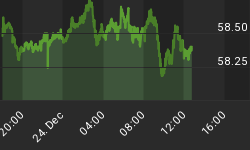There are four stages of fiat money printing that have been used by central banks throughout their horrific history of usurping the market-based value of money and borrowing costs. It is a destructive path that began with going off the gold standard and historically ends in hyperinflation and economic chaos.
Stage one is the most benign of the four, but it sets the stage for the baneful effects of the remaining three. The first level of monetary credit creation uses the central banks' artificial savings to set short-term interest rates through the buying and selling of short-duration government debt. This stage appears innocuous to most at first but is insidiously destructive because it prevents the market from determining the cost of money. This is crucially important because all assets are priced off of the so called "risk-free" rate of return. A gold standard keeps the monetary base from rising more than a few percentage points per annum and thus restrains bank lending. However, having a fiat currency also means a nation has a fiat monetary base. This leads to unfettered bank lending and the creation of asset bubbles.
The second stage of monetary madness has been around for decades but is now commonly known as Quantitative Easing (QE). After several cycles of lower and lower short-term interest rates that are intended to bring the economy out of successive recessions, the central bank (CB) ends up pegging rates at zero percent or below. Once CBs run out of room on the downside of short-term rates they go out along the yield curve and begin to artificially push down borrowing costs for long-term debt. It is important to note that at this stage CBs only purchase assets on private banks' balance sheets and at least pretend they will someday liquidate these holdings.
The third level of monetary madness is now being threatened to be imposed upon the population by central banks across the globe. This stage is called "Helicopter Money" and is the brainchild of noted economist Milton Friedman. But in reality, versions of it have been used many times prior to Mr. Friedman's appellation of central bank money drops. Friedman argued the use of Helicopter Money to combat deflation, but it has been traditionally used to help an insolvent government service its debt.
At its core, Helicopter Money is defined to be the issuance of non-maturing government debt or the direct issuance of credit to the public that is financed by the central bank. Both forms of money drops operate most efficiently by circumventing the private banking system. This is because CBs and governments don't have to worry about private banks deciding to forgo buying more government debt if favor of holding the fiat credit as excess reserves. Helicopter Money allows citizens the direct access to new credit without the threat of having it unwound from the CB. The main difference between non-maturing debt issuance and direct public credit is the former allows the government to direct who gets the new money, and the latter gives the CB that discretion. But in either case, Helicopter Money amounts to a direct increase in the broad money supply and inflation.
As I mentioned in last week's commentary, The Bank of Japan and perhaps even The European Central Bank are seriously contemplating saying "get to the chopper" very soon. Alas, once you get to level 3 there will be an inexorable march towards the next level. This is because there is no calling in the helicopters without causing a devastating plunge in asset prices and a bond market collapse, which results in massive economic chaos.
This brings us to the final stage of central bank intervention, which is the interminable and direct purchase of sovereign debt by a central bank for the sole purpose of keeping interest rates from spiraling out of control. Hence, the 4th stage of Monetary Madness occurs once inflation becomes fully entrenched in the economy.
It would be pure folly to assume that central banks can achieve their 2% inflation targets with impeccable precision. Years' worth of deficit spending, surging debt to GDP ratios and a gargantuan increase in central banks' balance sheets will eventually lead to a significant erosion in the confidence of central bankers to maintain the purchasing power of fiat money. Therefore, inflation won't just magically stop at 2%; it will eclipse that level and continue to rise.
But that's only half of the issue. Sovereign bond yields have been slammed so far down by CBs that nearly 30% of the entire supply of government-issued debt now trades below zero percent. The return of inflation must surely cause a mass exodus of longs from the bond market, just as short sellers begin to pile on top. The bond market will also respond in violent fashion -- taking yields up 100's of basis points rather quickly -- due to the anticipation of waning bond bids from central bankers.
Of course, surging debt service payments will render debt-saturated governments completely insolvent, which forces central banks into stage 4. Sadly, this is the conclusion that lies ahead for the developed world. Investors should not become complacent with the current innocuous state of global bond yields. In reality, they have become incendiary bombs that will inevitably explode with baneful implications for those that are not fully prepared.
















